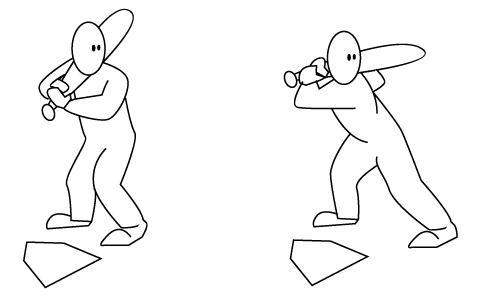The 12 principles of animation are 12 different techniques animators use in their animations to make them seem more alive.

Anticipation is used to prepare the audience for an action and make it seem more realistic by giving it wind up, examples of this include how a batter swings the bat back first before hitting the ball.

Staging is used to keep the focus on what is relevant, and avoiding unnecessary detail, this is done in a variety of ways such as the placement of a character in the frame, the use of light and shadow, or the angle and position of the camera.

Straight ahead action and pose to pose are two different approaches to the drawing process, straight ahead action means drawing out a scene frame by frame from beginning to end, while pose to pose involves starting with drawing a few keyframes, and then filling in the intervals later, Straight ahead action creates a more fluid, dynamic illusion of movement, but it is hard to maintain proportions and to create convincing poses along the way. Pose to pose works better for dramatic or emotional scenes where composition and relation to the surroundings are of greater importance.


Follow through and overlapping action is a general heading for two closely related techniques which help to render movement more realistically, and help to give the impression that characters follow the laws of physics. Follow through means that loosely tied parts of a body should continue moving after the character has stopped and the parts should keep moving beyond the point where the character stopped to be pulled back while overlapping action is the tendency for parts of the body to move at a different rate.

The movement of the human body and most other objects needs time to accelerate and slow down, because of this animation looks more realistic if it has more drawings near the beginning and end of an action and fewer in the middle.

Most natural action tends to follow an arched trajectory and animation should adhere to this principle by following implied arcs for greater realism. This technique can be applied to a moving limb by rotating a joint or a thrown object moving along a parabolic trajectory, though there is an exception in mechanical movement which typically moves in straight lines.

Adding secondary actions to the main action gives a scene more life and can help to support the main action. A person walking can simultaneously swing his arms or keep them in his pockets. The important thing about secondary actions is that they emphasize, rather than take attention away from the main action.

Timing refers to the number of drawings or frames for a given action, which translates to the speed of the action on film, correct timing makes objects appear to obey the laws of physics making it seem more realistic

Exaggeration is an effect especially useful for animation, as a perfect imitation of reality can look static and dull in cartoons. The classical definition of exaggeration, employed by Disney, was to remain true to reality just presenting it in a wilder, more extreme form.

Solid drawing means giving your drawings giving them volume and weight to make them look more realistic and 3D.

Appeal is where one makes a character interesting to the audience. A characters appeal can be reduced if a character is too simple or too detailed so it is important to keep a track of these when making a character appealing.


